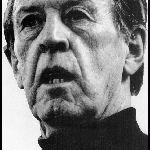Modules and courses
 At many universities students sign up to read for a degree (sometime called a course) rather than for a series of single modules (each one of which are sometimes called a course). At the OU students have to be enrolled not once for a degree but many times. How has this complexity arisen?
At many universities students sign up to read for a degree (sometime called a course) rather than for a series of single modules (each one of which are sometimes called a course). At the OU students have to be enrolled not once for a degree but many times. How has this complexity arisen?
In 1971 an article by Walter James, a Dean at the OU argued that because its students studied part-time, registered for one course (module) at a time and often left some time between studying individuals courses, ‘it is inevitable therefore that the university has a credit course structure for its degree award… it is a consequence of this degree structure in the context of continuing education provision, that the university has a credit exemptions policy.’ See W. James, ‘Not a solution but a start’, New Academic 2, 13 May 1971, pp. 1-2 (p. 1).
In The Listener, 14 October 1971, Raymond Williams (pictured) considered the ‘uniquely valuable experiment’ which was the collaborative work of course teams and then added:
The collaboration was tried as a principle and as the first stage in trying to think through some new problems in education which are also, fundamentally, problems in communication. What materialised from this was the idea of the unit: the course was made up of units. I expect it began from something like the idea of the traditional student’s weekly essay subject.
Perhaps you have better ideas about the evolution of the OU’s academic structures? Do let us know.